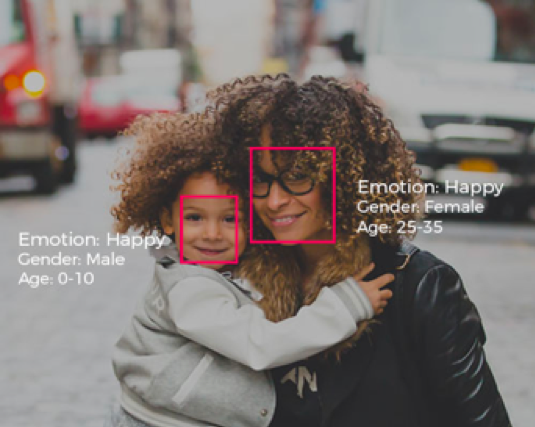AI Insights: Your Hub for the Latest in Artificial Intelligence
Artificial Intelligence (AI): A Force Multiplier
Written by Scott Wilson Co-Founder & CEO (with the help of AI, of course!) April 4th 2024
It feels like there isn’t a day that goes by without some ground-breaking announcement in Artificial Intelligence (AI) hitting the news feeds. This is lending to a kind of corporate feeding frenzy for AI, or is it just AI FOMO? In boardrooms around the world, the directors and captains of industry are talking about AI like never before, on top of that, Generative AI has done something that generations of AI and machine learning before haven’t been able to do: made AI feel real, with tools like Open AI’s ChatGPT of Google's Gemini executives can touch and feel the enormous power of AI.
With so much talk and hype around AI, why aren’t we seeing companies diving head-first into AI transformation? Sure, there are some AI-first organisations, usually tech companies and some early adopters, that are reaping significant early rewards, but for most companies, AI is still more of a buzzword rather than a driver of value creation. Ask the average CEO about the benefits they expect from their AI projects, and you’ll most likely get some vague standard response, “We’re piloting a number of projects at the moment”, but in real terms, many CEOs aren’t quite sure of what value they’ll get, if any, from scaling their AI projects.
In an era where digital transformation dictates the pace of business evolution, artificial intelligence is not just a tool, but a force multiplier. This term, traditionally used in military contexts, refers to a factor that dramatically increases a group’s effectiveness in achieving its mission. In the corporate context, AI holds a similar, transformative potential—empowering companies to transcend traditional growth trajectories, multiplying revenue growth, dramatically improving productivity, reducing costs, exponentially increasing profit, and unlocking an unparalleled competitive edge. In a recent McKinsey article, “Ten unsung digital and AI ideas shaping business”, it was estimated that there is $ 30 trillion (yes, with a T) that will arise from digital products yet to be launched.
AI as a Corporate Force Multiplier: The journey of integrating AI into business operations initiate a virtuous cycle. Initial investments in AI lead to increased efficiency and reduced operational costs, thereby boosting profits. These additional resources can then be reinvested back into scaling AI initiatives, which in turn accelerates growth off a lower cost base, creating a self-sustaining loop of investment, innovation, and expansion. This cycle not only accelerates growth but also solidifies a company’s standing in a competitive market, and McKinsey reports that the gap in digital and AI maturity between the leaders and lagging companies has increased by 60%.
The mastery of AI deployment begets what can be termed an ‘unreasonable competitive advantage.’ It’s a stronghold so robust that competitors grapple to match pace, let alone consider how to overtake. However, achieving and maintaining this competitive edge demands more than just technological investment; it requires strategic foresight and a culture of continuous innovation.
For CEOs and C-suite executives steering the future direction of large corporations, understanding AI’s potential beyond the buzzwords is pivotal. At its core, AI encompasses technologies capable of performing tasks that typically require human intelligence. These range from understanding natural language and recognising patterns to making decisions based on complex data. When woven into every process and subtask within an organisation, AI not only augments efficiency but also paves the way for innovation and growth.
Consider the impact of AI-driven analytics on customer behaviour predictions, enabling personalised marketing strategies, or the use of machine learning for optimising supply chain logistics, significantly reducing costs and enhancing productivity. These are but glimpses into how AI can redefine the way businesses operate, turning routine challenges into opportunities for growth.
Yet, harnessing AI’s full potential is fraught with challenges, from ensuring data privacy and security to addressing ethical considerations in AI deployment. Leaders must navigate these waters with a keen eye on regulatory compliance, ethical standards, and societal impact while driving technological adoption.
As we stand on the brink of a new era in business strategy, the call to action for CEOs and C-suite executives is clear: to recognise AI’s potential as a "Force Multiplier" and actively resource and engage in its rapid deployment. The journey toward leveraging AI begins with a commitment to understanding its capabilities, fostering a culture of innovation, and investing in the future. The time to act is now, for in the race towards digital supremacy, the first mover advantage is undeniable.


Agentic AI vs Autonomous AI: What’s the Difference and Why It Matters for Your Business
Written by Scott Wilson Co-Founder & CEO (with the help of AI, of course!) December 5th 2024
The AI revolution is accelerating, and over the next 18-24 months, it will transform industries in ways few businesses are prepared for. Two powerful concepts—agentic AI and autonomous AI—are at the forefront of this disruption. According to USA start-up accelerator Y Combinator, Vertical AI Agents are set to be 10X bigger than the SaaS industry.
Understanding these technologies isn’t just a matter of keeping up—it’s about staying ahead in a world where AI will reshape entire processes, job roles, and industries. If you’re a business leader, now is the time to plan how you’ll deploy AI tools and teams to drive growth, efficiency, and innovation.
So, what’s the difference between Agentic AI and Autonomous AI, and why does it matter? Let’s break it down.
Agentic AI: The Specialist Agent at Work
Agentic AI refers to AI systems designed to perform specific tasks or solve defined problems. These “agents” are highly skilled specialists trained to execute a particular function quickly and precisely. They require some level of human input or oversight but are immensely powerful when deployed correctly.
For example, at Amplifir, we developed an AI copywriting agent (Amp'd AI CopyBot) to solve a significant challenge for a client who needed over 1,200 pages of SEO-optimised website content. This task would traditionally require a team of 12 copywriters to work for months.
Here’s how our Agentic AI CopyBot worked:
- Analysed keywords, competitors’ pages, and existing content.
- Generated H1 headings, meta descriptions, and plagiarism-free SEO copy.
- Maintained the tone of voice and style set by a human copywriter for key pages.
What would have taken a team of 12 people up to three months to complete was completed with just one copywriter and the AI Agent, saving time, resources, and significant cost.
Agentic AI is ideal for businesses looking to optimise specific workflows or complete tasks at scale. It’s efficient, reliable, and capable of delivering consistent results across repetitive or labour-intensive processes.
Autonomous AI: Your Digital Workforce
If Agentic AI is the specialist, Autonomous AI is the all-rounder. Think of autonomous AI systems as an entire cross-functional team working together on a task or project. They are designed to act independently, making decisions and completing tasks without human oversight. These agents can handle dynamic environments, adapt to new challenges, and even collaborate with other AI agents.
Think of them as your future workforce: digital team members capable of running entire processes or even entire business functions.
Imagine an Autonomous AI agent working as:
- A marketing strategist: Planning, launching, and optimising ad campaigns in real-time.
- A sales assistant: Responding to customer enquiries, scheduling meetings, and following up on leads.
- A finance analyst:Reconciling accounts, identifying cost-saving opportunities, and predicting future trends.
Autonomous agents go beyond completing tasks—they adapt, learn, and improve over time. They don’t just execute—they think.
Why it matters: Autonomous AI has the potential to revolutionise entire business models. It’s not just about doing things faster or cheaper—it’s about doing things differently. Businesses that embrace Autonomous AI will gain a massive competitive advantage in efficiency, scalability, and innovation.
How These Tools Will Disrupt Industries
Agentic and Autonomous AI are poised to disrupt industries on an unprecedented scale. Consider the following:
- Efficiency Gains: Tasks that once required teams of people can now be completed by AI agents in a fraction of the time.
- Cost Savings: By reducing the need for large teams or extensive resources, businesses can operate more leanly and redirect savings into growth initiatives.
- Job Displacement: While this technology creates opportunities for innovation, it also poses challenges in the form of job displacement. The efficiency gains we achieved with CopyBot—a task that previously required 12 copywriters—are just the tip of the iceberg.
The applications are particularly exciting for business Executives, CMOs and marketing leaders. Imagine a team of AI agents handling campaign creation, content production, audience segmentation, and data analysis—leaving your human team free to focus on strategy and creativity.
The real challenge isn’t whether these tools will work—they already do—but whether businesses are ready to adopt them at scale.
Agentic vs Autonomous AI: What’s the Key Difference?
In simple terms:
- Agentic AI focuses on specific tasks. It’s like a sniper, hitting defined targets with precision.
- Autonomous AI takes on broader roles. It’s more like a full team, capable of operating independently and adapting to changing environments.
Both are incredibly powerful, but their use cases are different. While Agentic AI excels in structured, repetitive tasks, Autonomous AI shines in complex, dynamic scenarios where adaptability is key.
What Should Business Leaders Do Today?
The era of AI agents is upon us, and businesses must act now to remain competitive. Here’s how you can get started:
- Audit Your Processes: Identify tasks and workflows that are repetitive, time-consuming, or resource-intensive. (boring, repetitive or dangerous)
- Experiment with AI Tools: Start small—deploy Agentic AI for specific tasks to see immediate gains.
- Plan for Autonomous AI: Think bigger. What roles could be handled by Autonomous AI agents in the future? What would your team look like if some roles were AI-driven?
- Work with Experts: Partner with AI specialists such as Amplifir - Performance Digital Marketing Agency for marketing and Wilson A.I. for the development of Agentic AI or Autonomous AI agents to ensure you’re not just adopting AI but leveraging it strategically.
The AI Agent Road Ahead
Agentic AI and Autonomous AI aren’t just buzzwords—they’re disruptive tools that will reshape the business landscape. They’ll optimise processes, drive efficiency, and create opportunities for innovation.
But they’ll also disrupt industries, displace jobs, and force businesses to rethink their entire strategies. The question isn’t if your business will be affected—it’s when and how.
Now is the time to put the hammer down and build your team of AI agents. Whether you’re looking to scale faster, cut costs, or drive innovation, these tools offer an unprecedented opportunity to transform the way you work.
Harnessing Anonymous Facial Analysis to Enhance Customer Satisfaction and Audience Measurement. Are your customers happy?
Written by Scott Wilson Co-Founder & CEO - Updated January 2025
Who are my ideal customers? How do I get them to purchase my product or service? How do I know if my customers are happy with their experience? Regardless of the industry, if your business interacts with customers, you’ve likely pondered these critical questions. The modern marketplace offers no easy answers, with increasing competition and evolving customer expectations creating fresh challenges daily.
Add the ever-present threat of online competitors, and staying ahead of the curve can seem daunting. However, emerging technologies like facial analysis and computer vision empower businesses to tackle these challenges head-on. These tools provide actionable insights into customer behaviour, helping businesses enhance customer satisfaction and fine-tune their audience measurement strategies.
The Evolution of Customer Expectations
Today’s customers seek more than just products or services; they crave meaningful connections with brands that resonate with their personal values and aspirations. Businesses that can create positive emotional experiences hold a competitive edge. In fact, customers are increasingly drawn to brands that make them feel good about themselves—and this emotional connection often drives purchasing decisions.
In the past, finding a competitor’s product required effort. Now, with the power of Siri, Alexa, and Google at their fingertips, customers can instantly search for the best restaurant or retail store “near me.” This always-connected landscape means that customers hold the power to choose where to invest their limited time, money, and attention.
For businesses, this shift has made it essential to gather and analyse the wealth of data available from sources like sales transactions, website analytics, customer reviews, and even in-store foot traffic. Yet, surprisingly, many businesses still fail to leverage this treasure trove of data effectively.
The Power of Emotions in Decision-Making
While businesses often focus on tangible aspects like pricing and product features, these are not always the primary drivers of customer behaviour. Emotions play a critical role in decision-making. For example, why does a consumer willingly purchase a luxury handbag for $2,500 when they know it only cost $50 to produce? It’s not about the price—it’s about how the product makes them feel.
Understanding and tapping into these emotional drivers can make all the difference in a competitive market. But how can businesses reliably measure emotions? This is where anonymous facial analysis and computer vision come into play.
Introducing Anonymous Facial Analysis
Facial analysis technology leverages advanced computer vision to interpret facial expressions, age ranges, gender, and even emotional states in real time. Importantly, this process is conducted anonymously, ensuring customer privacy is protected. With tools like the ones offered by Wilson AI, businesses can now measure key metrics such as:
-
Customer emotions (e.g., happiness, frustration)
-
Foot traffic and dwell times
-
Age demographics and gender breakdowns
-
Customer behaviour at specific locations or times
This data provides a clearer picture of who is interacting with your brand and how they feel during these interactions.
Bridging the Gap Between Data and Insights
When demographic and emotional data is combined with existing data sets like point-of-sale (POS) or customer relationship management (CRM) systems, it creates powerful opportunities to:
-
Analyse in-store sales conversion rates
-
Optimise product ranges based on customer preferences
-
Identify store “hot spots” and “dead zones”
-
Understand who is purchasing your products—and who isn’t
For instance, imagine knowing not just how many customers visited your store but also their emotional state during their visit. Was the majority of your audience engaged and happy, or were they frustrated and disengaged? By linking this data to sales outcomes, businesses can make informed decisions to improve both the customer experience and the bottom line.
Real-Time Insights for Real-world Impact
In today’s fast-paced world, having access to real-time data is a game-changer. Wilson AI’s anonymous audience analytics technology enables businesses to act on insights as they happen. This allows retailers, restaurateurs, and service providers to adapt their strategies dynamically, ensuring they meet customer needs in the moment.
Consider a scenario where a store notices a spike in foot traffic, but the emotional data suggests customers are largely neutral or frustrated. This insight could prompt immediate action, such as deploying additional staff or offering in-store promotions to improve the customer experience.
Enhancing Customer Satisfaction Through Emotional Intelligence
At its core, anonymous facial analysis provides businesses with an opportunity to understand and cater to their customers on a deeper level. By measuring emotions, brands can:
-
Build stronger emotional connections with customers
-
Tailor their marketing and messaging strategies to resonate with their audience
-
Enhance the overall customer experience in both physical and digital spaces
Privacy and Ethical Considerations
While the benefits of anonymous facial analysis are clear, it’s equally important to address privacy concerns. Wilson AI’s technology is designed with privacy at its core, ensuring that all data collection is completely anonymous. No personally identifiable information is stored or shared, providing peace of mind for both businesses and their customers.
The Future of Audience Measurement
As customer expectations continue to evolve, businesses must adapt by leveraging cutting-edge technologies like anonymous facial analysis and computer vision. These tools not only provide valuable insights into customer behaviour but also empower businesses to enhance customer satisfaction and refine their audience measurement strategies.
At Wilson AI, we’re committed to helping businesses harness the power of these technologies to drive success. By understanding your customers on a deeper level, you can deliver exceptional experiences that keep them coming back for more. Ready to learn how Wilson AI can help you transform your customer interactions? Contact us today to get started.


Leveraging AI-Powered People Counting for Enhanced Retail Audience Measurement
Written by Scott Wilson Co-Founder & CEO - Updated January 2025
Understanding customer behaviour is key to staying competitive in the ever-evolving retail landscape. Retailers are increasingly turning to advanced technologies like computer vision and AI-powered solutions to gain actionable insights into foot traffic and customer demographics. These tools provide a wealth of data for businesses to optimise their operations, improve the customer experience, and increase profitability.
The Importance of Audience Measurement in Retail
Retailers face many challenges, from optimising store layouts to understanding customer preferences and ensuring staff efficiency. Accurate audience measurement helps solve these issues by providing real-time data on customer behaviour. With tools like people counting and footfall counters tailored for retail, businesses can make data-driven decisions to enhance their offerings and operational efficiency.
What Is People Counting and Why Does It Matter?
People counting refers to measuring the number of individuals entering and exiting a retail space. With modern AI-driven people detection systems, retailers can automate this process, eliminating human error and providing consistent, reliable data. Key benefits of people counting include:
- Accurate Foot Traffic Insights: Track customer flow to identify busy periods and allocate resources effectively.
- Enhanced Store Layouts: Optimise floor plans based on traffic patterns.
- Improved Marketing Campaigns: Understand the effectiveness of promotions by analysing traffic before, during, and after campaigns.
AI and Computer Vision Revolutionising Retail
AI-powered solutions like computer vision are transforming how retailers measure and understand their audiences. These systems provide detailed insights without compromising customer privacy by analysing video footage from CCTV or web cameras. Key features include:
- Real-Time Foot Traffic Analysis: Track the number of people entering and leaving the store.
- Demographic Insights: Measure age ranges, gender distribution, and even emotional states of customers.
- Zone and Direction Analysis: Understand which areas of the store attract the most foot traffic and customer flow patterns.
These tools deliver actionable data through intuitive dashboards, enabling retailers to monitor key metrics and adjust strategies in real-time.
Applications of AI-Powered People Counting in Retail
AI-driven audience measurement systems have a wide range of applications, including:
- Optimising Staff Allocation
- Knowing peak hours allows retailers to allocate staff where they’re needed most, ensuring better customer service and reducing waiting times.
- Improving Store Layouts
- Retailers can place high-margin products in strategic locations by identifying high-traffic zones to boost sales.
- Enhancing Marketing ROI
- Audience measurement helps retailers evaluate the effectiveness of marketing campaigns by comparing foot traffic patterns before and after promotions.
- Increasing Operational Efficiency
- Automated people counting reduces the need for manual tracking, freeing up staff for more valuable tasks and minimising errors.
How Wilson AI Empowers Retailers
Wilson AI provides state-of-the-art audience measurement solutions that utilise the latest computer vision and AI advancements. Our tools deliver precise, real-time insights to help retailers improve customer experiences and drive business growth. Key features of our solutions include:
- Real-Time People Counting: Gain instant visibility into store traffic and capacity.
- Demographic Data Analysis: Understand your audience with anonymised data on age, gender, and emotions.
- Customised Alerts: Receive notifications for metrics like high traffic volumes or long dwell times.
- Comprehensive Dashboards: Access all your data in a single, easy-to-use platform.
Privacy and Ethical Considerations
Wilson AI’s solutions are designed to prioritise customer privacy. All data is collected and analysed anonymously, ensuring compliance with data protection regulations while delivering valuable insights for retailers.
Future-Proofing Retail with AI-Powered Insights
As customer expectations evolve, businesses must leverage advanced technologies to stay ahead. AI-powered footfall counters tailored for retail provide a competitive edge by delivering deeper insights into customer behaviour and preferences. These systems improve operational efficiency and create more engaging shopping experiences.
In today’s competitive retail environment, understanding your audience is more critical than ever. AI-powered solutions for audience measurement, people detection, and people counting enable retailers to optimise their operations and deliver exceptional customer experiences.
Wilson AI’s cutting-edge solutions empower businesses to harness the full potential of computer vision and AI, turning data into actionable insights. Ready to take your retail operations to the next level? Contact us today to learn how our AI-driven tools can transform your business.
© Copyright WilsonAI.com 2018 - 2025
